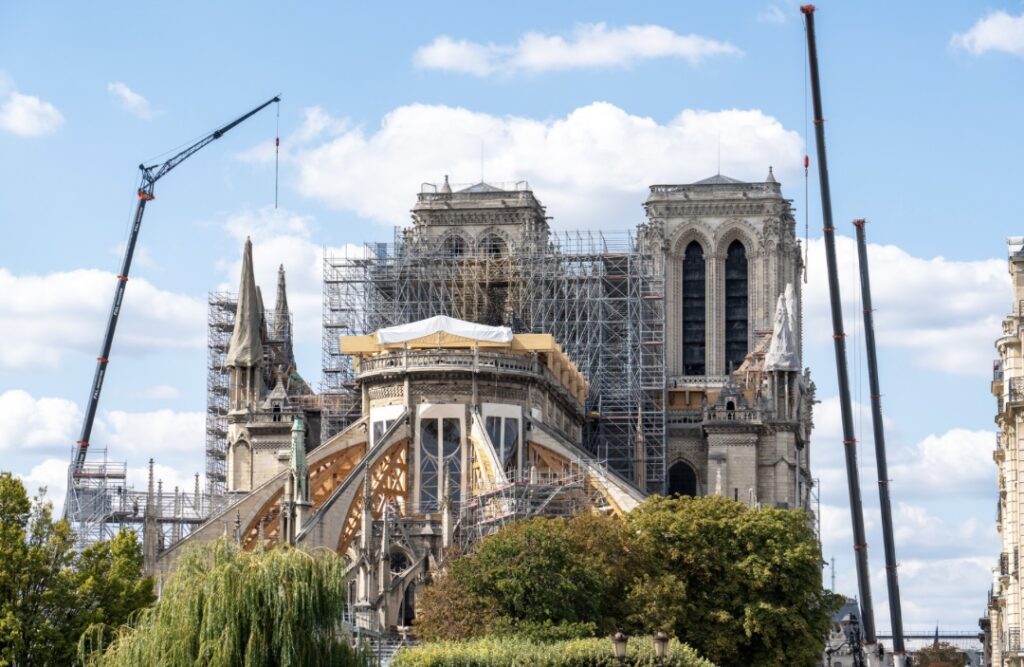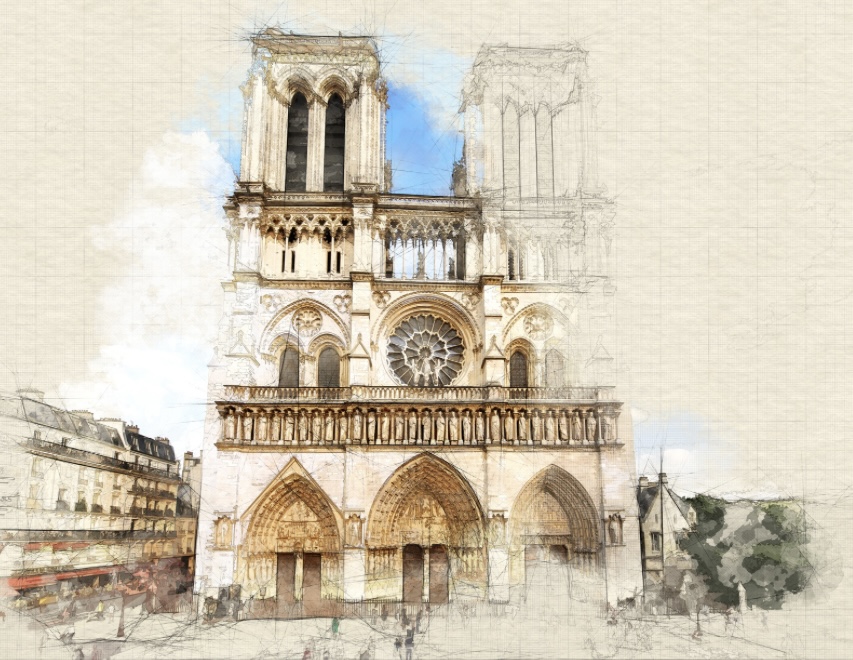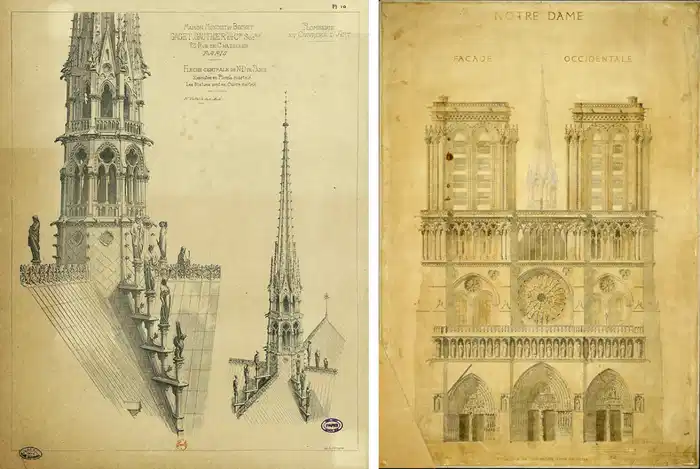
Notre-Dame de Paris, heart of French history, heart of the joyful hours, the great hours, the terrible hours of a great and old nation: Saint Louis, barefoot, holding the crown of thorns, Henri the 4th’s mass, Louis the 13th’s vow, Bossuet preaching Louis the 14th, Napoleon’s coronation, Claudel’s conversion, Charles de Gaulle and the Te Deum of the Liberation… Notre-Dame de Paris reopens its doors, five years after the devastating fire of April 15, 2019.

Notre-Dame de Paris under construction
Born from the vision of the Bishop of Paris, Maurice de Sully, Notre-Dame de Paris Cathedral succeeded four previous buildings. In 1160, when the population of the city continued to grow, and the Romanesque cathedral was no longer sufficient to accommodate it, he decided to build a sanctuary of a new type. The architecture of the new cathedral would be Gothic. This style, of French invention, allowed the vertical development of the buildings and the increase in glass surfaces, creating much brighter sanctuaries. Several large churches had already been built in this new style: Saint-Denis Basilica, Notre-Dame of Noyon Cathedral, Notre-Dame of Laon Cathedral, and Saint-Etienne of Sens Cathedral which was nearing completion. Maurice de Sully wanted to build the largest and most beautiful cathedral ever built. King Louis the 7th offered the sum of 200 gold pounds, and it was the Pope who, in his presence, laid the first stone in April 1163. The work lasted until 1345. From then on the cathedral would be the mystical heart of the Kingdom of France.
The French Revolution put the building in danger for the first time. Transformed into a temple dedicated to the Goddess Reason, then turned into a wine warehouse, the cathedral suffered. The revolutionaries decapitated the statues of the kings on the façade gallery, mistaking them for kings of France. They destroyed or damaged many other works of art. Then came the Empire with other concerns than the preservation of the ancient heart of the nation.

Sketch of the main facade of Notre-Dame de Paris
It took Victor Hugo in 1831 to wake up the French people. His book ” The hunchback of Notre-Dame” generated a renewed passion for the cathedral and its restoration began in 1845 under the direction of Eugène Viollet le Duc. The work, which lasted until May 31, 1864, gave the building the appearance, familiar to all, that it had before the fire of April 2019. The spire, whose collapse in the flames shocked the entire world, was the creation of Viollet le Duc. The genius architect had been inspired by those of Orléans and Amienscathedrals, to rebuild the original spire that had been dismantled just before the Revolution because it threatened with ruin.

Notre-Dame de Paris, drawing of the spire, Eugène Viollet-le-Duc, via Connaissance des Arts; with Notre-Dame de Paris, restoration project, Eugène Viollet-le-Duc and Jean-Baptiste Lassus, via Images d’Art
Today, after five years of extraordinary restoration work, Notre-Dame is reopening its doors. Notre-Dame as no one had ever seenher before, a cathedral of blond stone and light. Two thousand companions, these craftsmen of all trades trained in ancestral construction techniques: stone cutters, carpenters, master glassmakers, painters, gilders, sculptors, founders, etc., have brought to the rescue of Notre-Dame the know-how passed down from generation to generation since the first cathedral builders of the Middle Ages. As for the Grand Organ, the largest in France, built in 1730, consisting of approximately 8,000 pipes, a console with five keyboards and pedals, and 109 stops, whose largest pipes stand an impressive 32 feet tall, it has been totally dismantled, cleaned of the lead dust generated by the fire, and is ready to be again the voice of Notre-Dame.
A tremendous surge of international generosity helped save Notre-Dame: 340,000 donors from 150 countries, 846 million euros collected. At the forefront of donors were the Americans with 65,000 contributions totaling 70 million dollars. Humbly, the AFGO was a part of this never seen before universal and collective engagement for a building.
Notre-Dame, more beautiful, clearer, more radiant, reopens its doors to the people of Paris and to the world, ready to welcome back its 15 million annual visitors. It can already be visited online and for those who will go to Paris in the upcoming months it is recommended to book your access on the cathedral’s website: https://www.notredamedeparis.fr/ to avoid a long wait. For believers, an international mass regularly takes place on Sundays at 11:30 am because Notre-Dame is not just Paris cathedral, it belongs, more than ever, to the whole world.
Muriel Partridge, Afgo Teacher
